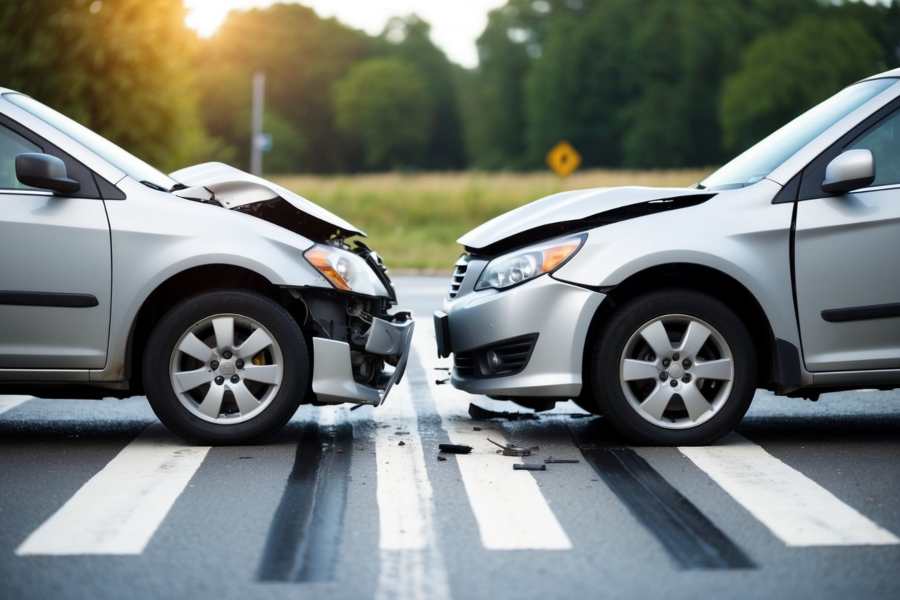Determining fault in a car accident case is a critical aspect that influences insurance claims and potential legal action. In California, fault is typically assessed through evidence such as police reports, witness statements, and traffic laws, which help establish who was responsible for the accident. Understanding these factors can significantly impact the outcome of claims and injuries sustained.
California follows a comparative negligence system, meaning that multiple parties can share fault. This can complicate the process, as each party’s percentage of responsibility will affect the compensation they receive. It is essential for those involved in an accident to gather thorough documentation at the scene to support their case.
Navigating the complexities of fault determination requires attention to detail and knowledge of legal protocols. An informed approach can help individuals protect their rights and ensure they receive fair compensation.
Determining Fault in Car Accident Cases
Establishing fault in car accident cases involves navigating a specific legal framework, understanding the role of negligence, and considering factors like comparative fault. Evidence collection and investigation play critical roles in this process.
Legal Framework for Fault Determination
In California, fault determination for car accidents is governed primarily by the concept of negligence. A party is considered negligent if they fail to exercise reasonable care, leading to an accident. This can include actions such as speeding, failing to obey traffic signals, or driving under the influence.
California follows a fault-based system, where the responsible party may be liable for damages to the other party. The injured party must prove that the other driver’s negligence directly caused their injuries. Legal statutes outline the necessary criteria for establishing fault, which include identifying the duty of care and any breaches.
Role of Negligence in Fault Attribution
Negligence is key to fault attribution in car accidents. It encompasses both the conduct of the driver and the circumstances surrounding the incident. Factors considered include the driver’s behavior immediately before the crash and any potential distractions, such as mobile phone use.
In assessing negligence, courts evaluate whether the driver acted as a reasonable person would in similar circumstances. If a driver is deemed negligent, they may face legal consequences and be held liable for damages incurred by the other party.
Comparative Fault in California
California employs a comparative fault system, allowing multiple parties to bear responsibility for an accident. This means that even if the injured party shares some degree of fault, they may still recover damages.
For instance, if a driver is found 30% responsible for the accident and the other party 70%, the recovering party can claim 70% of their damages. Consequently, assessing each party’s level of fault becomes crucial when calculating compensation. This system promotes fairness by considering the actions of all involved.
Evidence and Investigation
Gathering evidence is vital in determining fault in car accident cases. Critical types of evidence include police reports, eyewitness statements, photographs of the accident scene, and vehicle damage assessments. Each piece of evidence aids in reconstructing the events leading to the accident.
Investigators focus on various factors, such as road conditions, visibility, and vehicle speed. Additionally, surveillance footage may provide insights into the accident dynamics. Thorough investigation and proper evidence collection significantly impact the determination of fault and potential outcomes in legal proceedings.
Implications of Fault Determination
Determining fault in a car accident case has significant implications for both the at-fault driver and the other parties involved. The following outlines how fault impacts insurance claims, legal consequences, recovery of damages, and the limitation period for filing claims, specifically within the context of car accident cases in California.
Impact on Insurance Claims
In California, fault affects how insurance claims are processed. Each party’s liability influences their insurance coverage responsibilities. If a driver is found at fault, their insurance will generally be responsible for covering damages to the other party.
Insurance companies may assign a percentage of fault to each driver involved. This percentage can determine how much compensation is recoverable. Under California’s comparative negligence laws, if a party is partially at fault, their recovery amount reduces accordingly.
Timely filing of claims is crucial, as delays can hinder recovery efforts. Insurers often investigate fault before settling claims, which affects the speed and amount of compensation received.
Legal Consequences for At-Fault Driver
An at-fault driver can face various legal consequences. These may include traffic citations, civil liability, and potential lawsuits. Being found at fault can impact their driving record, leading to increased insurance premiums.
In some cases, the driver may face criminal charges, especially if negligence resulted in injury or death. Traffic violations can lead to fines or even points on their license, affecting driving privileges.
Legal representation becomes essential in these situations. A knowledgeable attorney can help navigate complexities, especially if a lawsuit is filed by an injured party seeking compensation.
Recovery of Damages
Recovery of damages in a car accident case hinges on fault determination. The at-fault driver’s insurance typically covers the other party’s medical bills, vehicle repairs, and loss of income.
In California, damages can be economic or non-economic. Economic damages include tangible losses like medical expenses, while non-economic damages might cover pain and suffering.
The percentage of fault assigned to each driver directly affects the total recovery amount. If the injured party is found partially responsible, their compensation diminishes.
Proving fault is crucial in maximising recoverable damages. Evidence such as police reports, witness statements, and accident scene photos can substantiate claims.


